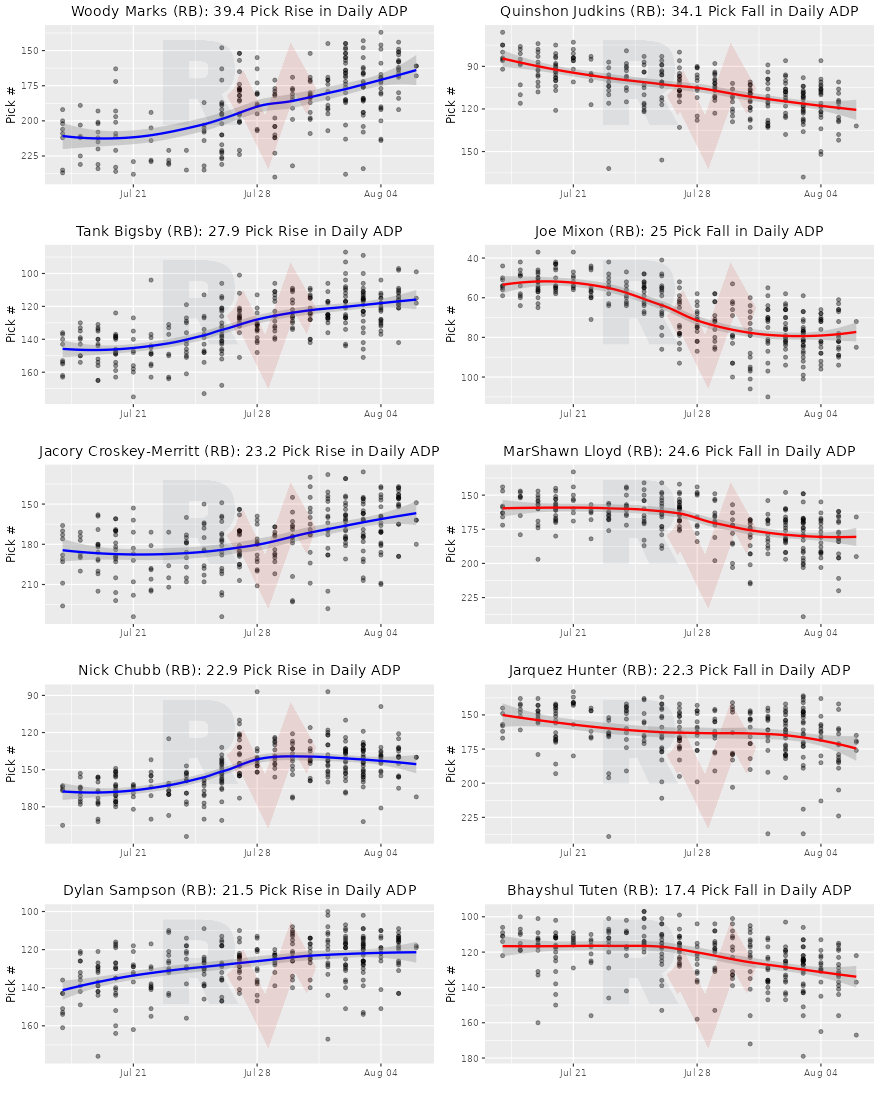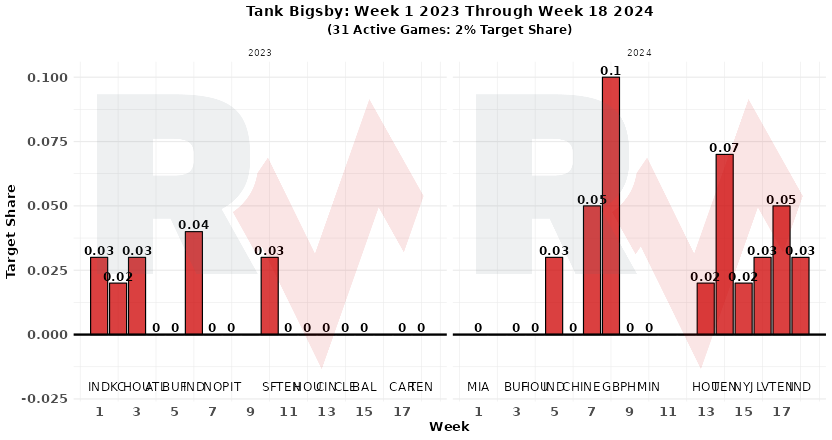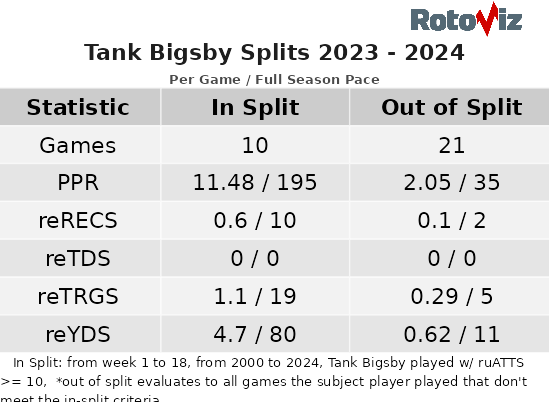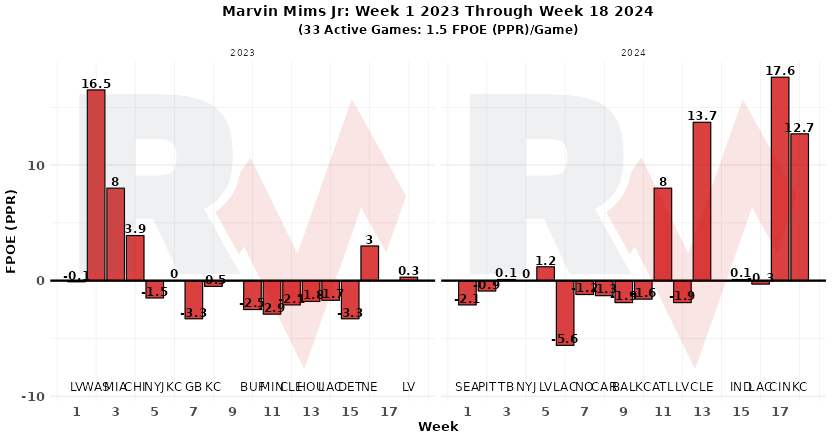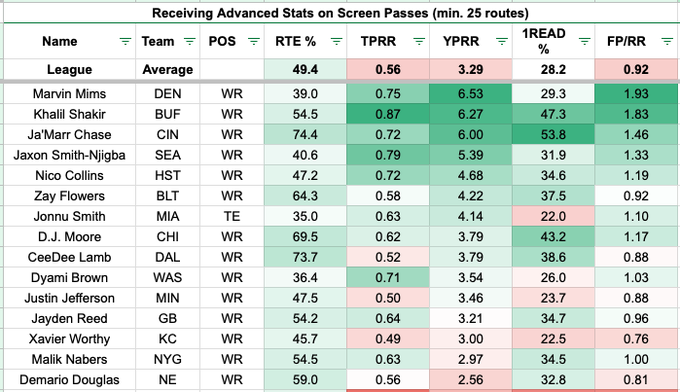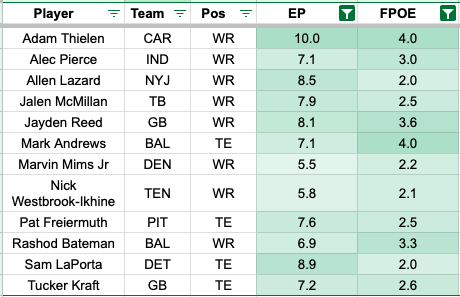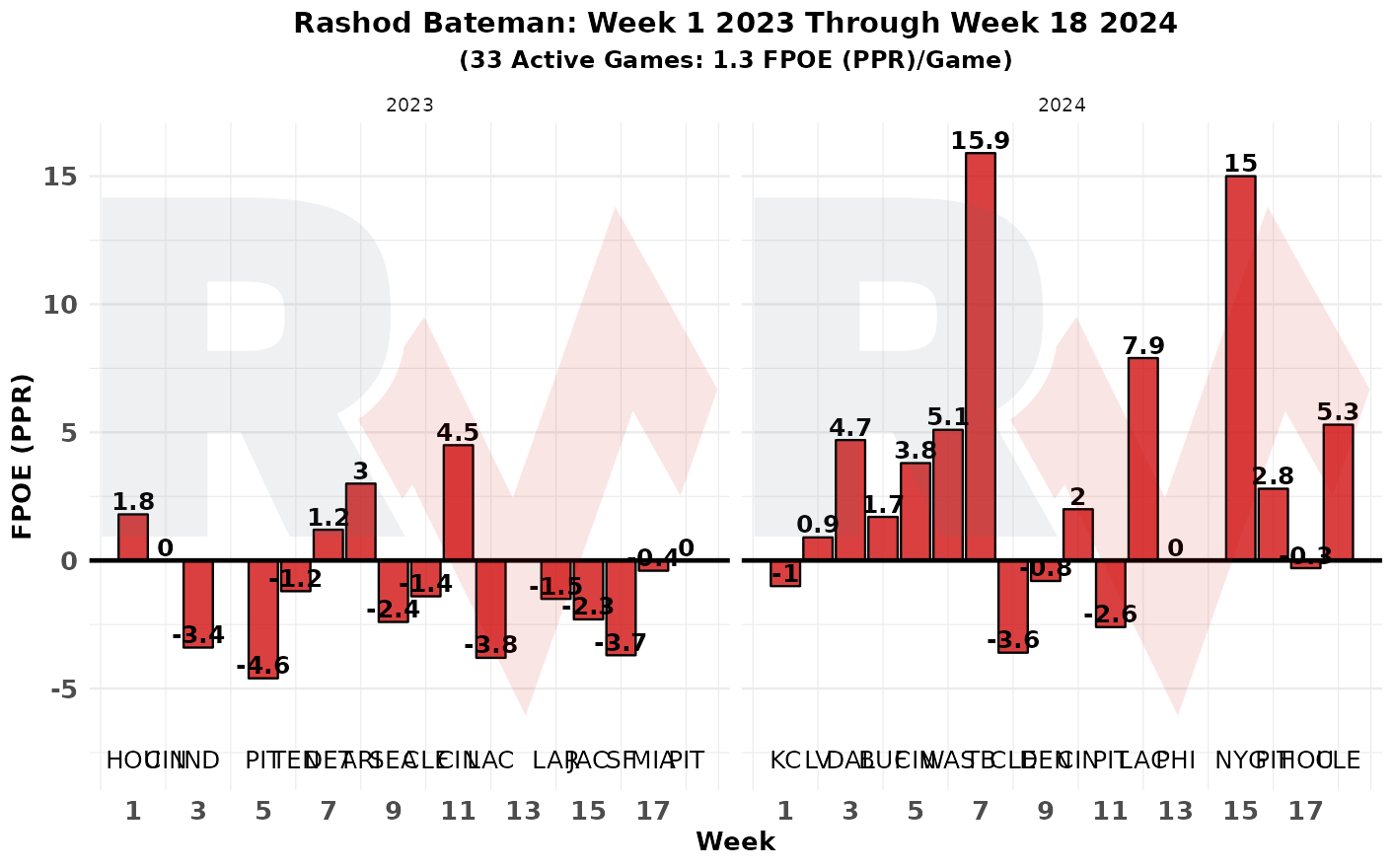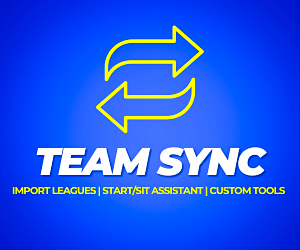Corbin identifies five fantasy football value picks with upside for 2025 drafts. His top later-round fantasy football sleepers and league-winners for best ball.
Best ball leagues have been taking over the world. Everyone loves drafting and then watching how the team shakes out. In a recent article, I examined the historical data for Fantasy Football Players Championship (FFPC) formats. The data uncovers where drafters scooped up potential values to win best ball leagues.
Using historical data and win rates by position helped to narrow down the player pool to five potential best ball value selections in FFPC leagues. These players will likely also be valuable in redraft formats, though they might be better in best ball because of their spike-week potential.
Per usual, we'll use a data-focused approach to identify five value picks in FFPC best ball leagues. Why do we like them? What's their path to fantasy relevance in best ball leagues?
Be sure to check all of our fantasy football rankings for 2025:- 2025 fantasy football rankings
- Running back (RB) rankings
- Wide receiver (WR) rankings
- Quarterback (QB) rankings
- Tight end (TE) rankings
- Defense (D/ST) rankings
- Kicker (K) rankings
- FLEX rankings
- Dynasty rankings
Colston Loveland, TE, CHI
FFPC ADP: 106.4, TE13
It's somewhat of a toss-up once we start targeting tight ends past the top three. The historical data typically points toward waiting at the position to find potential values. Brock Bowers was a big hit among the rookie tight ends going within the top 15 picks last season.
Kyle Pitts Sr. and Evan Engram were the two other tight ends who scored over 170 fantasy points in their rookie seasons while being drafted in the first round of the NFL Draft. T.J. Hockenson didn't break out until Year 2, with several others not living up to the hype, outlining the concerns with rookie tight ends.
The main question with Loveland will be whether he can earn the second- or third-highest team target share for the Bears in 2025. That will help him have a breakout rookie season. Pitts ranked third with a 20 percent target share in his rookie season on the Falcons behind Russell Gage Jr. (22 percent) and Calvin Ridley (27 percent).
Bowers led the Raiders with a 24 percent target share in 2024, with Engam ranking second on the Giants (20 percent) behind Odell Beckham Jr. in 2017. Besides DJ Moore, the Bears pass-catchers will compete for the second- or third-most targets in 2025. The situation with the Bears and Loveland appears optimal, especially when we consider Sam LaPorta broke out as a rookie, with a 21 percent target share behind Amon-Ra St. Brown (30 percent).
Loveland doesn't have elite collegiate production, but he peaked in Year 3 with 2.20 receiving yards per team pass attempt and a 42 percent Receiver Dominator rating. For context, Loveland led the Wolverines in receiving yards in his final college season while ranking second in their national championship run in 2023. The closest comparisons for Loveland include several notable names, but the list is somewhat of a mixed bag.
Summary
It's optimal to shop in the range where Loveland goes from TE10 to TE15. We're betting on the draft capital investment, projected offensive improvement, and the Ben Johnson effect, potentially giving Loveland a chance to be second or third on the team in target share, closer to 20 percent.
He has multiple paths to fantasy relevance, with Rome Odunze or Luther Burden III struggling or missing time. That's especially notable because Michigan deployed Loveland out of the slot over 47 percent of the time, similar to Tyler Warren. Loveland projects like a best ball value to break out in Year 1.
Tank Bigsby, RB, JAX
FFPC ADP: 125.6, RB47
Bigsby has been one of the biggest running back risers in ADP over the past few weeks. The market seems to despise Travis Etienne Jr., while Bigsby's training-camp news continues to be positive. Bhayshul Tuten suffered a hamstring injury in practice, causing the Bigsby truthers to be chugging along even more.
The reports from Jaguars' training camp continue to be positive for Bigsby, but we should take that with a grain of salt since most news tends to be positive. I've pounded the table for Tuten in dynasty and redraft formats, though we'll want to monitor the hamstring injury.
Bigsby has two games with two or more targets in his career (6.5 percent). That aligns with Bigsby's limited receiving usage in college, with a career 6 percent receiving yardage market share. However, Bigsby saw his receiving yardage market share increase to 9 percent in his final college season.
There could be a scenario where Bigsby garners 2-3 targets per game, which would be serviceable with his rushing efficiency. That aside, when Bigsby averaged 10 or more rush attempts, he scored 11.5 PPR/G. Bigsby generated rush yards above expected at an above-average rate (0.70), ranking 12th among running backs with 50 or more carries.
Meanwhile, Etienne averaged a mediocre -0.30 rush yards over expected per attempt in 2024. The lack of receiving targets might not matter at Bigsby's price because he can provide value as an efficient rusher with touchdown potential. That's especially true for any formats where it's half PPR or non-PPR formats.
Summary
Bigsby closed the gap between his and Tuten's ADP, putting him close to Dylan Sampson, Rachaad White, Tre Harris, and Burden. That's a juicy ADP range for several sleepers. Make sure Bigsby is at the top of your queue because the market is hot as a best ball sleeper, even at the raised price. Best ball formats might be the best format for Bigsby since we won't have to predict when those 12 carries, 90 rushing yards, and two touchdown performances occur.
Marvin Mims Jr., WR, DEN
FFPC ADP: 146.2, WR659
When drafting best ball leagues, Mims becomes the ideal WR6 or WR7. Mims often sits there in the middle rounds with tons of upside, as we saw in his Year 2. He had three spike-week performances to close out the 2024 season, scoring as a WR1 and averaging over 24 fantasy points. Mims scored five of his six touchdowns with 51.5 percent of his season-long receiving yards in those three contests.
Seven receivers averaged 2.25 yards per route run against man and zone coverage, with a minimum of 50 targets. Malik Nabers, Justin Jefferson, St. Brown, Puka Nacua, Ladd McConkey, Nico Collins, and Mims. However, the advanced data indicates Mims was a screen monster.
When Mims was targeted and it was not a screen pass, he averaged a 17 percent targets per route run, a 6.3 percent first-read target share, and 1.97 yards per route run. However, when Mims was targeted on screen passes, he averaged a whopping 75 percent targets per route, 29.3 percent first-read target share, and 6.53 yards per route run. That's ridiculous.
We might be projecting too much, but if Mims runs more routes and expands his role beyond screen passes, that will lead to more opportunities and consistency. Mims ran a route on 28.1 percent of the team's dropbacks, with an uptick to 36.8 percent from Weeks 12-18. It's reasonable to expect Mims to run routes on 50 percent or more of the team's dropbacks, making him a monster on a per-route basis.
Summary
In the ADP range where Mims goes, the receivers tend to dry up and involve more projection and hope for them than we've seen with Mims. Mims has an ADP near Rashid Shaheed (injury recovery), Christian Kirk, Marquise Brown, Rashod Bateman, and Kyle Williams. Bateman and Mims might fall into a similar bucket because they're better in best ball leagues based on their per-route usage and boom performances. Unless Mims sees his ADP skyrocket, continue to soak up the value in best ball leagues.
Braelon Allen, RB, NYJ
FFPC ADP: 142.2, RB53
The training-camp buzz for Allen continues to raise his draft cost. Breece Hall led the Jets in snap share (73 percent), rush share (61 percent), and target share (14 percent) at the running back position. Allen chipped in with a 27 percent snap share, 25 percent rush percentage, and a 5 percent target share. Even Isaiah Davis teased us at times.
Hall has been garnering elite volume, with the 14th-highest expected fantasy points per game. He garnered 80 percent of the team's rush attempts inside the 5-yard line, with Allen taking the other 20 percent. Both Allen and Hall fought for yards after contact, but struggled to create yards before contact and force missed tackles. It didn't help that the Jets offensive line ranked 27th in adjusted yards before contact per attempt.
Like Bigsby and other running backs with little receiving production, we question whether Allen can garner more targets. Allen was an uber-productive prospect as a freshman in college, and he peaked at a 6 percent receiving yardage market share in his junior year.
Some of Allen's top prospect comparisons were Isaiah Spiller, Marlon Mack, Kenneth Dixon, James Conner, and Tyler Allgeier. Some would argue that Allen's prospect profile might be better than those running backs. Unfortunately, Allen landed in a tough spot with Hall because the latter running back checks the boxes of a high-end fantasy producer.
Summary
Assuming Justin Fields starts at quarterback, the running back targets might fade. That should coincide with better rushing efficiency for Hall and Allen because we've seen running backs fare well alongside rushing quarterbacks. The Jets invested in a first-round right tackle in Armand Membou, with additional depth pieces to their offensive line. Allen's ADP hasn't risen much before and during camp, with the positive buzz, making him a priority target in the double-digit rounds in best ball leagues.
Rashod Bateman, WR, BAL
FFPC ADP: 159.9, WR63
One way to identify players who might perform better in best ball leagues involves looking at players who typically outperform their expected fantasy points. That's especially true when a lower volume player garners high-end production in spike weeks.
The visual above shows the pass-catchers with two or more fantasy points over expected per game (FPOE/G) and expected fantasy points at 10 or below. The most notable include Alec Pierce, Jalen McMillan, Jayden Reed, Mims, Pat Freiermuth, Bateman, LaPorta, and Tucker Kraft. Speaking of Bateman, he had the second-highest team target share (16 percent) behind Zay Flowers.
Bateman averaged over 19.4 PPR/G in his five peak games as a WR1 or WR2. Unfortunately, that comes with Bateman giving us a floor of WR3 or worse in over 70 percent of his games played in 2024. Thankfully, Bateman receives passes from one of the most efficient quarterbacks in Lamar Jackson, who might be due to regress in 2025.
Jackson ranked first in EPA per dropback, fourth in explosive pass rate, and first in touchdown rate. For context, the Ravens ranked 29th in neutral game script pass rate in 2024, suggesting they tend to rely more on the run game, so Jackson's passing efficiency should regress.
Summary
Besides Flowers and Mark Andrews, the rest of the Ravens pass-catchers go outside the top 125 picks in FFPC drafts. Jackson is the first quarterback off the board after his elite and uber-efficient season in 2024. Bateman remains one of the cheaper pass-catchers to stack with Jackson because of his spike weeks and ability to make explosive plays.
He continues to post impressive average separation scores against man and zone coverages, hinting that he may be more of a high-end receiver than initially expected, and in real-life outputs. Bateman ranked second on the team with an average separation score against man coverage, with the highest one versus zone defenses.
He may not garner the target volume in the Ravens offense. However, Bateman's best ball spike weeks have been something to latch onto while playing on an efficient team. Bateman is arguably one of the top best ball value picks.
More Fantasy Football Analysis

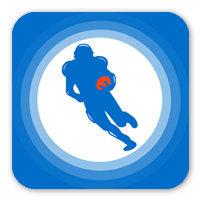



 RADIO
RADIO











